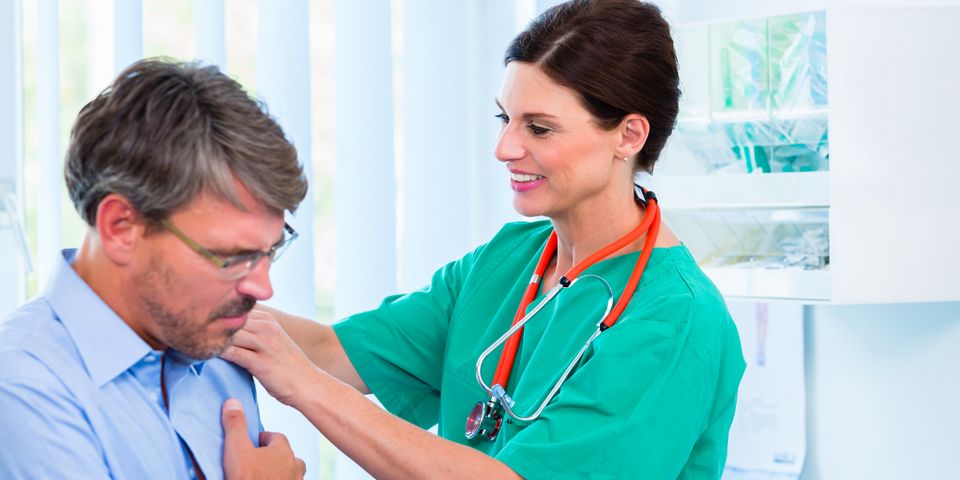
Shoulder discomfort and pain can inhibit your day-to-day life, impeding your ability to work, exercise, or even sleep. Out of the many causes of shoulder pain, a labral tear is one of the most common. If you think you might have a labral tear, you might be curious to learn about its causes and treatment options, including shoulder surgery.
Guide to Labral Tears
What is a Labral tear?
A labral tear involves damage to the ring of cartilage around the shoulder's joint base. These injuries can be caused by a trauma, like a fall or heavy lifting accident. Activities involving raising the arms above the head repeatedly are another common cause. Labral tears are prevalent among softball and baseball players, construction workers, weightlifters, and gymnasts. Nontraumatic labral tears usually occur because the muscle is weak or the joint is unstable. People with weak muscles and greater joint mobility or “looseness” are most likely to experience nontraumatic labral tears.

Symptoms & Diagnosis
Symptoms vary depending on the injury’s location. Some mild tears are asymptomatic at first, though symptoms typically develop over time as the condition worsens. Common signs of a tear include a dull, throbbing pain on the top of the shoulder, catching or popping sensations with movement, and shoulder weakness.
It can be challenging to diagnose a labral tear, as the tissue is deep within the shoulder, and the condition can resemble others, including arthritis, tendonitis, and rotator cuff issues. A doctor will likely take X-rays and perform a magnetic resonance imaging (MRI) scan or CT-arthrogram (CAT) scan to get a closer look inside the body. Unfortunately, even these tests are not always accurate. The most reliable way to diagnose a labrum tear is with arthroscopy, a type of shoulder surgery.
Treatment
Treatment depends on the injury’s severity and type. In some cases, mild tears can heal on their own with rest, anti-inflammatory medication, and physical therapy. Sometimes, cortisone injections are also used. However, shoulder surgery may be necessary to repair more severe damage, particularly if more conservative treatment has been unsuccessful. Often, a surgeon can repair the tear at the same time as performing an arthroscopy. The procedure involves a tiny incision and tools for minimal invasiveness.
If you’re an Oahu resident needing shoulder surgery, turn to Dr. Edward J. Weldon. Based in Honolulu, HI, this board-certified orthopedic surgeon specializes in shoulder, clavicle, and elbow surgery. Backed by over 20 years of experience, this caring, reputable doctor is one of the community’s most trusted sources for quality medical care. Call (808) 522-4232 to speak with a friendly team member or visit the website to learn more about the practice and surgical procedures.
The information on this site is not intended or implied to be a substitute for professional medical advice, diagnosis, or treatment. All content, including text, graphics, images, and information, contained on or available through this website is for general information purposes only. Hawaii Pacific Health makes no representation and assumes no responsibility for the accuracy of the information contained on or available through this website. Such information is subject to change without notice.
About the Business


